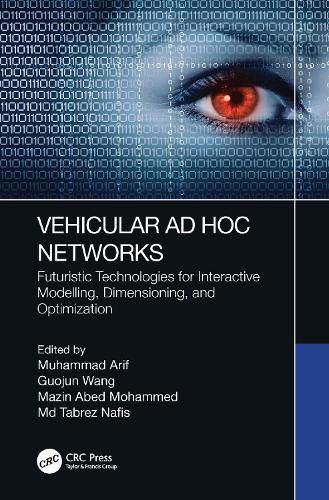Readings Newsletter
Become a Readings Member to make your shopping experience even easier.
Sign in or sign up for free!
You’re not far away from qualifying for FREE standard shipping within Australia
You’ve qualified for FREE standard shipping within Australia
The cart is loading…






With the evolution of technology and sudden growth in the number of smart vehicles, traditional Vehicular Ad hoc NETworks (VANETs) face several technical challenges in deployment and management due to less flexibility, scalability, poor connectivity, and inadequate intelligence. VANETs have raised increasing attention from both academic research and industrial aspects resulting from their important role in driving assistant system.
Vehicular Ad Hoc Networks focuses on recent advanced technologies and applications that address network protocol design, low latency networking, context-aware interaction, energy efficiency, resource management, security, human-robot interaction, assistive technology and robots, application development, and integration of multiple systems that support Vehicular Networks and smart interactions.
Simulation is a key tool for the design and evaluation of Intelligent Transport Systems (ITS) that take advantage of communication-capable vehicles in order to provide valuable safety, traffic management, and infotainment services. It is widely recognized that simulation results are only significant when realistic models are considered within the simulation tool chain. However, quite often research works on the subject are based on simplistic models unable to capture the unique characteristics of vehicular communication networks. The support that different simulation tools offer for such models is discussed, as well as the steps that must be undertaken to fine-tune the model parameters in order to gather realistic results. Moreover, the book provides handy hints and references to help determine the most appropriate tools and models. This book will promote best simulation practices in order to obtain accurate results.
$9.00 standard shipping within Australia
FREE standard shipping within Australia for orders over $100.00
Express & International shipping calculated at checkout
With the evolution of technology and sudden growth in the number of smart vehicles, traditional Vehicular Ad hoc NETworks (VANETs) face several technical challenges in deployment and management due to less flexibility, scalability, poor connectivity, and inadequate intelligence. VANETs have raised increasing attention from both academic research and industrial aspects resulting from their important role in driving assistant system.
Vehicular Ad Hoc Networks focuses on recent advanced technologies and applications that address network protocol design, low latency networking, context-aware interaction, energy efficiency, resource management, security, human-robot interaction, assistive technology and robots, application development, and integration of multiple systems that support Vehicular Networks and smart interactions.
Simulation is a key tool for the design and evaluation of Intelligent Transport Systems (ITS) that take advantage of communication-capable vehicles in order to provide valuable safety, traffic management, and infotainment services. It is widely recognized that simulation results are only significant when realistic models are considered within the simulation tool chain. However, quite often research works on the subject are based on simplistic models unable to capture the unique characteristics of vehicular communication networks. The support that different simulation tools offer for such models is discussed, as well as the steps that must be undertaken to fine-tune the model parameters in order to gather realistic results. Moreover, the book provides handy hints and references to help determine the most appropriate tools and models. This book will promote best simulation practices in order to obtain accurate results.